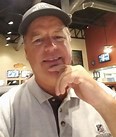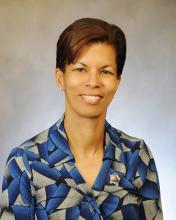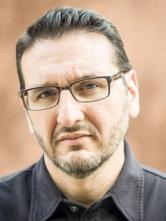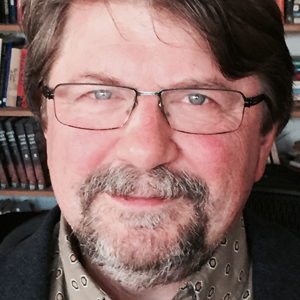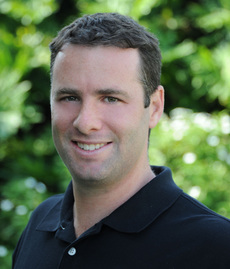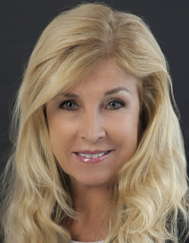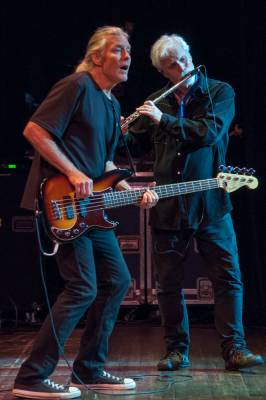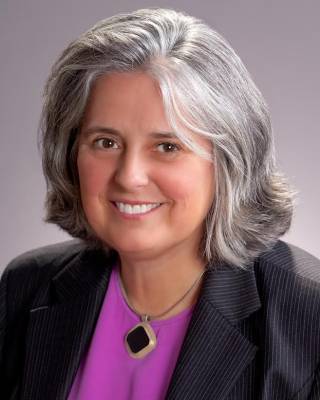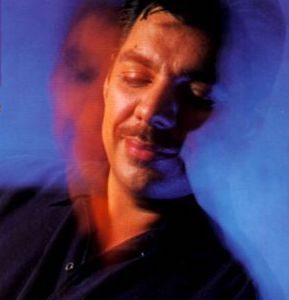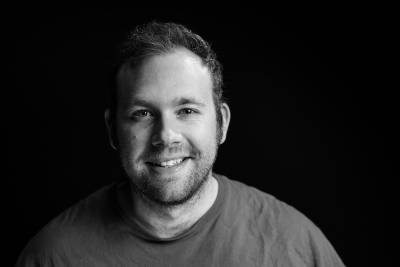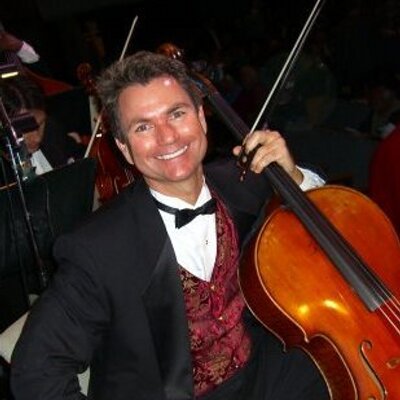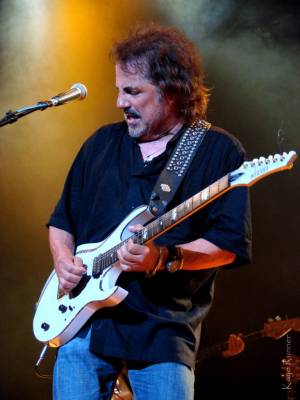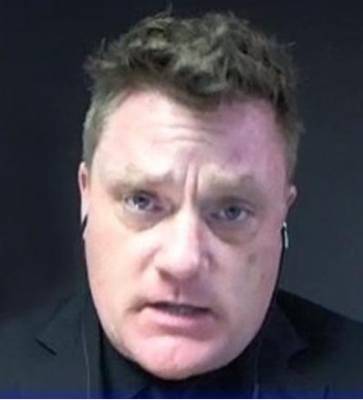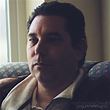Headlined Guests
Headlined Guests that have appeared on BBS Radio TV
Contracted by NASA for many years, by trade David is a leader and visionary in technology. He is a great artist, 3-D designer, and machinist, with his design skill as a strong point in his career base. His fabrication skills also are extremely keen, all through his artistic abilities give him the vision to do his work. It takes more than just knowledge of a craft or skill, it also takes talent to bring technology to life. Project to project, the space industry utilized David’s design and fabrication skills to the fullest. Receiving countless rewards for jobs executed with perfection.
David the published author of, Angel Boy. A rendition of his life’s view into words.
Poisoned, stabbed, swindled. Then his ex-wife pulled the trigger! However, it does not begin there. David raced in the Astrodome, became a contractor for NASA, was buried alive, and then died on the operating table. All before the age of 31. David is a loving single dad with a story of survival, success, and everything in between.
Angel Boy is about a strong, never yielding positive determination to survive. Illustrating to others what harbored deep within. A drive to succeed even when the odds are against him. A fixer type mentality, Angel tries to be helpful to those who may need it. Full of good intent and a strong passion for life and love. A reflection on greatness, that men can also be strong enough to raise children. Without the support of a good mother or female influence. Yet after many years of great struggle, Angel does succeed!
Dream Development is his name for the development of tomorrow. He writes as passionate as he feels towards life. Life is rich with what comes out of a person’s personal actions. To take with us into heaven the richness of everything we see and discover. David wears his heart on his sleeve and lives life to its fullest.
“The world is my home, the life within is my family! My goal is to help to make this world a much better home for us all to live. A fun place to live, grow and prosper. Not only for myself but for all of us. We are all put on this earth to discover greatness and great love.”
David is an artist at heart, and extremely talented with his mind and hands. Animals and people mean more to him than just a name or a face. Each person is unique and has a story to tell. To watch and listen is always a treat. David could not wait to be a father and prize his children. His family was not well off, yet they showed wealth in their actions and how we interacted with each other.
This makes us rich. Life has only just begun for all of us!
About Robert Sjoquist:
Starting in 1977 with his first company, THE AVALANCHE COMPANY, Robert Sjoquist has always been fascinated with why people buy what they buy and what is the process that sets a value to a good or service?
The AVALANCHE COMPANY was a start-up based on an innovative way to remove snow from primarily Residential but also pitched Commercial roofs. It was an amazing concept and a brilliant idea but the Inventor and company Founder had gone Bankrupt trying to get the AVALANCHE into the Mainstream Marketplace. On his way to Bankruptcy he had rung up over $20,000.00 in Legal fees with Robert’s Father’s Patent and Trademarking Law Firm in Minneapolis, MN.
The result was that the firm, in order to try and salvage something from the account, took control of the limited inventory and all Patents and Trademarks that they had filed on behalf of the company and Attorney Sjoquist was tasked with “Get us some money for all of this” In stepped Robert with a Guerilla Marketing Plan that eventually got the product noticed and successful and he and his Father bought the Patents and Trademarks from the Law Firm and 3 years later sold them for a HUGE Profit to a small manufacturing company in the Midwest. By then Robert was off to his next innovative episode.
Soils Solutions LLC is Robert’s 12th start-up company and it truly brings together all that he has learned and had a passion for throughout his life. The innovative and market making plants, amendments and erosion control products that Soils Solutions Is either exclusive with or, at least, one of a very few Distribution points for will all be centers of their own Worlds at some time in the not too distant future and building the bridges to those new worlds is what Robert LOVES to be a part of.
About Soils Solutions:
Soils Solutions Inc. is a Certified Small Business that scours available markets, growers and suppliers locally and around the World so as to offer the most efficient, cost effective, environmentally beneficial and highest quality Plant and Soils Solutions available anywhere.
Toward that goal we are partnered with Delta Bluegrass in Stockton, California to distribute their proprietary line of Native California Legacy Grasses which have been proven to require 40% - 50% less water than traditional fescue grass sods that have been in the market for years. Our Native California Grass Sods Program currently features 5 varietals and each have features and characteristics designed for different installation requirements and aesthetics.
Working with our partners at Delta we are currently bringing to market a true Paradigm Shift in Extremely Low Water Groundcover. The plant is called KURAPIA and at Delta they grow it as a sod that is delivered as 2’ X 5’ strips that are rolled up and placed on pallets for deliveries daily to homes and commercial addresses across Southern California. KURAPIA has been proven to require 80% - 90% less water than conventional grass sods. In testing at various Universities, here and abroad, areas of mature KURAPIA have shown to achieve root depths in excess of 10’ deep into the ground so as an Erosion Control tool it is unsurpassed. KURAPIA also flowers periodically throughout the hotter Summer months so it is an excellent pollinator for your neighborhoods and gardens.
Another product line that we are extremely excited about is the Concrete Cloth textile matting sold by Milliken Industries. Cal Trans, the U.S. Forest Service and hundreds of City, County and State Maintenance Departments are using Concrete Cloth daily in their repair and design plans as a Hard Armor to protect vulnerable areas from water and soil erosion. Artists, Sculptors and Outdoor Space designers have discovered Concrete Cloth to be an amazingly flexible “Canvas” for creating truly unique visual and structural environments that will last for decades. Landscape Designers that work with Water Features and Water Courses LOVE that they can use Concrete Cloth to create Waterfalls, Streambeds and Bank Contours that were previously not possible. All of that plus the fact that Concrete Cloth has a fabric top layer that is paintable, stainable and almost chameleonlike in it’s characteristic of blending into the environment into which it was placed has allowed for the creative release of dimensional design not found until now.
As always Soils Solutions Inc. continues to be a provider of California Native Seed Mixes for Hydroseeding Contractors, City, County and State Botanists and Horticultural Designers and even to Homeowners with Large areas of land that they wish to keep in a “Native” condition. We carry the highest quality and most intensively researched Mycorrhizals, Humates, Organically Derived Fertilizers and more Generalized Soils Conditioners available in the marketplace.
As the Director of Soils Solutions, I am constantly searching for NEW but PROVEN “better mousetraps” that I can bring to our loyal and expanding customer base.
Arizona Department of Veterans’ Services Director Wanda Wright is the third generation of her family to serve in the U.S. military. She has three decades of military experience. As a 1985 United States Air Force Academy graduate, Colonel Wright began her military career as Deputy Budget Officer with the Tactical Air Command at Myrtle Beach, South Carolina, with a follow-on assignment to Davis-Monthan AFB, Arizona, as the Budget Officer.
Leaving active duty in 1990, Colonel Wright joined the Arizona National Guard. During the next 21 years, she served in various positions including accounting and finance officer, communications officer, executive officer and, finally, as the Director of Staff for the Adjutant General in Phoenix. Among her many achievements was to serve as Air Commander of Operation Jump Start from June 2006 to December 2008 during which she commanded more than 4,000 airmen on our Southwest border.
Colonel Wright holds a B.S. degree in Management from the U.S. Air Force Academy, an M.B.A degree from Webster University in South Carolina, an M.P.A. degree from the University of Arizona, and an M.A. in Educational Leadership from Arizona State University. Colonel Wright’s military awards and decorations include the Legion of Merit, the Meritorious Service Medal with oak leaf cluster, and the Air Force Commendation Medal.
Chain of Title by David Dayen
With a new afterword by the author
The “gripping” (The New York Times) and “Hitchcockian” (Publishers Weekly) story of how a nurse, a car dealership worker, and a forensic expert took on the nation’s largest banks
“If you’re looking for a book . . . that will get your heart pumping and your blood boiling—add this one to your list.”
—Senator Elizabeth Warren
Winner of the Ida and Studs Terkel Prize
A Kirkus Reviews and The Week best book of the year, David Dayen’s Chain of Title is a riveting work that recalls A Civil Action, Erin Brockovich, and Flash Boys, recounting how three ordinary Floridians—a car dealership worker, a cancer nurse, and an insurance fraud specialist—helped uncover the largest consumer crime in American history, challenged the most powerful institutions in America, and—for a brief moment—brought the corrupt financial industry to its knees.
Lisa Epstein, Michael Redman, and Lynn Szymoniak did not work in government or law enforcement. They had no history of anticorporate activism. Instead they were all foreclosure victims, and while struggling with their shame and isolation they committed a revolutionary act: closely reading their mortgage documents, discovering the deceit behind them, and building a movement to expose it. Harnessing the power of the Internet, they revealed how the financial crisis and subsequent recession were fundamentally based upon a series of frauds that kicked millions out of their homes because of false evidence by mortgage companies that had no legal right to foreclose. As Rolling Stone’s Matt Taibbi noted: “Chain of Title is a sweeping work of investigative journalism that traces the arc of a criminally underreported story in America, the collapse of the rule of law in the home mortgage industry.”
How I Became a Humanitarian Journalist by Tim Shorrock
In the fall of 2008, I was asked to speak at a conference organized by Alexis Dudden, a professor at the University of Connecticut, on Humanitarianism and Responsibility. Most of the speakers were human rights activists, and I was honored to be the only journalist. In my talk, I explained how I had become an investigative journalist and focused on two events that completely changed my life: my coverage of Korea in 1980 and Hurricane Katrina in 2005. Here’s what I said:
When Alexis first asked me to speak here, she suggested that I talk about my experiences as a journalist writing about South Korea during the 1980s and New Orleans and the US Gulf Coast after Hurricane Katrina. She saw a connection between my reporting in both instances. That was intriguing to me because 1) those experiences were among the most moving and emotionally jarring experiences of my adult life and certainly the highlights of my career as an investigative journalist and 2) nobody had ever suggested that those stories might be connected.
But as I began to think about the topic of this conference I had to figure out how my Korea and Katrina reporting would fit into our theme. How could I define it in the context of humanitarianism and responsibility? Particularly when journalists typically report about humanitarian disasters and situations from the perspective of observers, but rarely actually participate in them. And suddenly the answer loomed: I should talk about humanitarian journalism. It occured to me that that’s what I’ve been practicing all these years – without even knowing it. So today I’m going to create a new genre of journalism.
Let me start with my experiences in Korea. In 1980 a terrible event occured in Kwangju, a city in southwestern Korea that was the birthplace of Kim Dae Jung, South Korea’s former president and its most famous dissident. On May 18, 1980, hundreds of students and democratic activists were shot down and bayonetted to death in the wake of a violent military coup in which Kim Dae Jung – who’d nearly been murdered by the Korean CIA seven years earlier – was arrested and nearly executed. In response to the savagery of the Korean Special Forces who were responsible for the bloodshed that day, the citizens of Kwangju, who were well organized after years of oppression, took up guns and chased the military out of town. For seven days a citizens’ committee held the city, negotiating with the military to seek a peaceful end to the crisis. It was the first uprising against military rule in South Korea since the Korean War and is widely seen there as a turning point in Korea’s democratic movement.
At the time of the uprising, a US military general commanded the combined South Korean-US Joint Command – just as it does now. One of the most powerful figures in the country was the American ambassador, the late William Gleysteen. With Korean and US forces surrounding the city, the Kwangju Citizens Committee made a desperate attempt to bring Mr. Gleysteen into the negotiations. But taking his command from President Jimmy Carter, a man who had pledged to make human rights the centerpiece of US foreign policy, Gleysteen refused. On May 22, 1980, at a meeting at the White House, Carter’s national security team – led by national security adviser Zbigniew Brzenzski and Assistant Secretary of State Richard Holbrooke – made a fateful decision to deploy Korean troops from the DMZ, the border with the North Korea, to put down the uprising.
Under my FOIA request, the secret minutes of that meeting were declassified. After a full discussion, the minutes stated, “there was general agreement that the first priority is the restoration of order in Kwangju by the Korean authorities with the minimum use of force necessary without laying the seeds for wide disorders later…Once order is restored, it was agreed we must press the Korean government, and the military in particular, to allow a greater degree of political freedom to evolve,” the White House decided. The U.S. position was summed up by Mr. Brzezinski as ”in the short-term support, in the longer-term pressure for political evolution.” But over the next eight years South Koreans endured one of the harshest police states in the world. And the people never forgot that all this had occured under a US president promising respect for human rights.
Even though I was living in the United States at the time, I was following these events almost on a minute by minute basis. In 1980, I was a graduate student in Asian Studies at the University of Oregon, and writing a thesis about the South Korean economy and its dependence on low-cost and unorganized workers. Workers and unions played a huge role in the democratic movement. I was shocked and ashamed that my government had aided and abetted a government that oppressed its citizens. A year after the Kwangju Uprising I went to the city and learned first-hand about the events there. I returned in 1985 and met many activists, some recently released from prison, who told me more stories and described their anger at the betrayal of the United States. Tell the American people why we are so angry, they asked me. Explain to them what we’ve been through. Make them understand that we believed America supported democracy, but when democracy was on the line, your leaders let us down. Tell Americans that we Koreans will never forget. I promised them that I would, and I promised myself that I would try to unravel the truth of the disgraceful American role in the events.
Why was I so outraged? Well, I had grown up in South Korea and Japan and had been raised by parents who spent their life serving humanitarian causes. My dad had learned the Japanese language while serving in the Navy during World War II and he and my mom, after meeting down the road from here at Yale Divinity School, had gone to Japan in 1947 as missionaries. For most of the next 20 years my dad provided humanitarin relief to Japan and South Korea sent by US churches. They both had a lifelong commitment to healing the wounds of war and improving the lives of people who had previously been America’s enemies. Their commitment placed a heavy burden on me and my siblings – not always a welcome one, I must add. But it nurtured in me a sense that I owed something to humanity and the knowledge that there were many many people less fortunate than me. And a belief that I had a responsibility to somehow make others aware of these truths.
Later, after South Korea became a democracy, the Korean parliament began looking into the events at Kwangju. The Bush administration refused to allow the US ambassador and the top US general to testify; instead it wrote a “white paper” explaining US actions. I read it carefully. After visiting Kwangju twice and reading everything I could find about the incident, I concluded it was full of holes. I filed a freedom of information request for all the background documents. By 1996 I had compiled over 3,500 pages of declassified documents.
They showed that, far from being ignorant of what the Korean military was planning in May 1980, the United States 1) gave the Korean generals a green light to use military forces to end the nationwide, peaceful protest movement that spread throughout South Korea in the spring of 1980 and 2) knew ahead of time that the generals were sending special forces troops trained to kill North Koreans to Kwangju and other hotspots.
We did not pull the trigger of the guns at Kwangju. But our government was complicit in the killing. To this day, no American official has ever acknowledged this or taken responsibility. But thanks to the documents I obtained, historians such as Chalmers Johnson and Don Oberdorfer have been able to write that the American role was far more direct than was ever admitted. Those documents told the truth. It’s one of the greatest accomplishments of my life. While my reporting on that story was fair, it was not objective – I took the side of the Korean democratic fighters who risked and lost their lives at the hands of one of the most vicious police states ever seen in Asia. My stories came from my identification with humanity and the truth. For a journalist there is nothing more important.
That’s also what drove me to report on Hurricane Katrina, which was in part a man-made tragedy where the government utterly failed to serve the people it is supposed to represent.
At the time of the hurricane I was living in Memphis, Tennessee. I was shocked along with most of the world at the inhumane response of the Bush administration. The thousands of people begging for help and rescue. President Bush playing air guitar while the nation wept. Telling his FEMA chief, “Brownie,” that he was doing a ‘heck of a job’ as the terrible events unfolded. I soon heard about a free clinic that had sprung up during the hurricane to help the poor and dispossessed. This was amazing to me because I knew from first hand experience that hundreds of nurses had contacted the Red Cross and the government to volunteer their services – only to be told that there was no need. Another lie.
I went down to the clinic, which was called Common Ground, in late September – about 3 weeks after the storm. I stayed in New Orleans for weeks afterward, and later spent a lot of time on the Mississippi Gulf Coast. It was heartbreaking.
Remember, I grew up in postwar Asia. I’ve seen a lot of destruction. But nothing like I saw in New Orleans’ Ninth Ward, where the flooding from the collapse of the levees was the worst. For blocks in every direction it was complete destruction. Empty lots where houses once stood. Cars on roofs. Big black marks showing how many bodies had been found in certain houses. It looked like a war zone. People evacuated as far as Utah, not knowing if they’d ever see their homes and neighborhoods again. And all our government did was hand out big contracts to giant corporations and asked them to lead the ‘reconstruction’ – for a profit of course. The people, the suffering people, were last on their list.
When I was down there I felt an intense sense of shame. I was ashamed that my government could let its own citizens down like this. I was ashamed that a proud African American community, with an amazing cultural heritage, could be abandoned like so much lost cattle. And I was angry at the excuses and explanations from Bush and his minions. The racist response of people like Rush Limbaugh that the people of New Orleans just wanted a handout – statements he repeated this year when flooding struck white Iowa. I yearned, and still do, for a government that cared for its citizens. All I could think of while I was there was – we need a new New Deal, like Roosevelt started. We need a Works Progress Administration – giving jobs to youths and anyone else who wanted to help New Orleans rebuild. We still need that.
But most of all I was struck by the humanity and dignity of the people living there. There’s one day I’ll never forget as long as I live. I was in New Orleans on assignment for Mother Jones with a photographer friend, Kike Arnal, who’s from Venezuela. We’d spent the last few days in the Ninth Ward walking around. The only people in the area were rescue workers, the police and the National Guard. One day the city announced that homeowners could go back to their neighborhoods for the first time. Kike and I showed up at a big crossroads in the Ninth Ward.
As Kike and I drove up, we spotted a family getting out of a van and pulling on white overclothes to protect themselves as they entered their homes for the first time since the storm. We asked them if we could accompany them, and they readily agreed. It was a family of four: Evelyn Gilbert, and her three sons, all in their 50s: Rhett, Gustaf and Daniel. I felt privileged to be with them on such a sacred moment. Kike and I followed them slowly down North Claiborne and into a little cul-de-sac near the canal. We stopped and got out in front of a long white house completely off its foundation. Next to it was a tiny blue structure, leaning crazily to one side with its roof caving in. It had been Evelyn’s home, and was built in 1978, she said; the rest of the family lived next door. The heavy line at the top of the roofs showed that both houses had been almost completely under water.
As the Gilbert brothers explored their property, I hung back, feeling like an interloper and trying to avoid being intrusive. After a while, I asked Evelyn, who didn’t want to go near her house, where she was when the water came. She told me she was evacuated on the Friday before the storm, and ended up in Houston; she’s now staying in Mississippi with family. She watched anxiously as her sons pushed open her front door and gingerly took a few steps inside the destroyed house. Finally, Rhett walked out carrying a portable barbeque. “We found something at least,” he said. “But it’s the only thing salvageable.” He dusted it off as best he could and loaded it into the van.
Gustaf and Daniel then went to look at their house as Rhett told me a little about the neighborhood. “I was born and raised here, and this is the only place I know,” he said. “I know this city like the back of my hand.” He motioned to the other broken structures near their property. “All these are kin-folk. Used to walk to the church over there, the store.” Now, he said, he lives in Dallas, and everywhere he walks he runs into another freeway; worse, the services he needs are far away. He had no idea if he and his family will return, or where his former neighbors are. Finished with their short tour, the Gilbert family shook hands with Kike and me and slowly drove away. All I could do was sit inside my car and weep.
Later that day Kike and I ran across Michelle McKenney Jones outside of her family home in the Lower Ninth that was built by her grandfather in 1953 and where her mother lived until Hurricane Katrina and Rita swept through the area. Jones sighed as she surveyed the house, which was knocked off its foundations and is now uninhabitable. The social impact of the disaster in the Ninth Ward, she said, was compounded because this neighborhood once had the highest percentage of black homeownership in the entire Parish of Orleans. Then she paused as her emotions caught up with her.
“You’ve got to be our voice,” she told me and Kike. “This community doesn’t have a voice. Nobody seems to be listening to us. Represent us, please.” As she spoke, tears filled her eyes and rolled down her cheeks. Kike and I stood with her in silence for a minute, trying to share her grief, and assured her that we would hold her words in our hearts. And I did tell her story. And I’m telling it to you now.
So what motivated me in both cases were the pleas of the victims and survivors – tell our story because no one else will: “Be our voice.” I heard almost the exact same words when I was reporting in Kwangju. I took those words like a solemn vow. Another motivation was the callousness of the government. Once, after my first visit to Kwangju, I met with the political officer at the US Embassy in Seoul. He told me the stories I’d heard about massive killing were exagerrations. Even the ones from the American missionaries, he said. Much later, when I got the documents, I was told officially by the State Department that, while Kwangju was a tragedy, “When all the dust settles, Koreans killed Koreans, and the Americans didn’t know what was going on and certainly didn’t approve it.”
Yet we trained these soldiers. We financed them. We told them their job was to defend their country against communism – and their own generals told them the rebels in Kwangju were communsts, to be treated like dogs (a statement that was repeated almost word for word on ABC’s Nightline by US General John Singlaub). Once I confronted Richard Holbrooke about Kwangju, and he literally screamed at me, explaining I had no real understanding of the national security stakes involved.
It was the same with Katrina. Nobody took responsibility. Brownie was fired, sure. But all the corporations that failed miserably to help – like the ones who couldn’t get the buses to New Orleans on time, or the ones who supplied the trailers filled with formaldahyde that poisoned – and still poison – so many residents of the Gulf – they got paid. Soon, America forgot what happened. Katrina was a national disgrace. There’s no other way to look at it. And that’s because it’s my responsibility as a journalist and a human being to speak for those who have no voice.
In other words, the truth of those residents of New Orleans and Kwangju is all of our truth. Humanitarianism means understanding the truth of lives we know nothing about. Responsibility means doing something to alleviate their pain and make sure their suffering never happens again. And to me that is the ultimate responsibilty of journalism – to go where ordinary people can’t go and tell the stories of those who suffer so the rest of the world can do something. It’s not “objective” journalism. There’s not “another side” to the story. It’s exposing reality – placing it before the public so they can’t hide from it. And our leaders can’t hide from it. It means taking risks. It means coming off like a fanatic sometime. It means making other people uncomfortable and even angry. And it means being human, and taking responsibility for the other inhabitants of this planet, and saying NO to the powers that be.
-----------------------------------------------------------------------------------------------------
Tim Shorrock is the author of Spies for Hire: The Secret World of Intelligence Outsourcing. He was raised in Japan and South Korea and has been covering the intersection of national security and capitalism since the late 1970s. During the Vietnam War he was active in the peace and antiwar movement and writes and comments frequently about US military policies in Asia and the Korean peninsula.
He published his first article for The Nation in 1983, when he wrote about the repercussions of a North Korean attack on a South Korean government delegation to Burma. Since then, he has published many investigative stories here, including groundbreaking exposes of the Carlyle Group, the Bush administration’s failed attempt to privatize Iraq, and the AFL-CIO’s intervention in Chile and other countries during the Cold War. He was the first journalist to interview the four National Security Agency whistle-blowers who exposed corporate corruption at the NSA and its extensive program of domestic surveillance.
Shorrock has been a frequent guest on Democracy Now! and his stories have appeared in many publications, including Salon, Mother Jones, The Progressive, The Daily Beast, and The New York Times. You can find much of his past work at his blog, Money Doesn’t Talk, It Swears. He has lived in Washington, DC, since 1982, and is a big fan of Bob Dylan and American blues and folk music.
Dr. Kovacs is a renowned performance physiologist, researcher, author, speaker and coach with an extensive background training and researching athletes and elite performers. His unique skillset has made him one of the worldwide leading performance experts in the area of optimizing human performance through the application of cutting edge, evidence-based information. He formerly directed the Sport Science, Strength & Conditioning and Coaching Education departments for the United States Tennis Association (USTA). He was an All-American and NCAA doubles champion in tennis at Auburn University and earned his PhD from the University of Alabama. He is a Certified Tennis Performance Specialist (CTPS) and Master Tennis Performance Specialist (MTPS) through the iTPA, and in 2012 he was the youngest ever recipient of the International Tennis Hall of Fame Educational Merit Award. He has worked with more than two dozen top professional tennis players on all aspects of physical training including John Isner, Robby Ginepri, Ryan Harrison and Sloane Stephens.
As a sports administrator and executive he has worked at the highest level of sports and industry. Most recently he was the Director of the Gatorade Sport Science Institute which was established in 1985 and is committed to helping athletes optimize their health and performance through research and education in hydration and nutrition science. He was also an executive at Pepsico working in the area of long term research and innovation focused on improving athletic performance and monitoring using science and technology. He also directed the Sport Science, Strength & Conditioning and Coaching Education departments for the United States Tennis Association (USTA). The USTA is the largest National Sports Governing Body in the US. During his tenure at the USTA he created the integration of the medical and sport science services for full time athletes at the National Training Center in Boca Raton, Florida as well as the development of full service care and training at satellite facilities in Los Angeles and New York. He was instrumental on securing a long term partnership with Cleveland Clinic Florida as well as creating a systematic approach to the training and treatment of tennis athletes throughout the US. He is also the co-founder of the International Tennis Performance Association (iTPA), which is the worldwide leader in tennis-specific performance enhancement and injury prevention education and certification. It is an international organization with members in over 23 countries focused on improving standards in the training and treatment of tennis athletes from the weekend warrior to the top professional players. The organization offers in-person and online educational opportunities for Strength & Conditioning professionals, athletic trainers, physical therapists, medical doctors, chiropractors, tennis coaches and other healthcare providers who work with tennis athletes. The iTPA is also the official education provider for major tennis federations throughout the world. Dr. Kovacs has also served on the investment and finance committees for the National Strength & Conditioning Association and gone through a Finance program for executives through the Emory University Goizueta Business School.
As a leader in the scientific community Dr. Kovacs has earned Fellow status in the American College of Sports Medicine (ACSM). The ACSM is the largest sports medicine and exercise science organization in the world. He has published over 50 peer-reviewed scientific articles and abstracts in top research journals, in addition to presenting workshops and keynote addresses on five continents and well over 100 presentations. His research has been published in top tier scientific publications including the British Journal of Sports Medicine, Clinical Journal of Sports Medicine, Sports Health, International Journal of Sports Physiology & Performance, Medicine and Science in Sports & Exercise, Journal of Strength & Conditioning Research among others. In 2010 he was awarded the prestigious Plagenhoef Award for sport science achievement (youngest ever recipient), and in 2012 he was the youngest ever International Tennis Hall of Fame Educational Merit Award winner. He currently chairs both the PTR Sport Science Committee and the ITF Health Benefits of Tennis Taskforce. He also is a member of the USTA National Sport Science Committee and the International Relations Committee of the ACSM. Over his career he has served on editorial review boards and as a peer reviewer for more than a dozen scientific journals.
Along with his academic and scientific background, Dr. Kovacs is also a coach and former professional athlete. He was an All-American and NCAA doubles champion in tennis at Auburn University. After playing professionally, he completed his graduate work at Auburn University and earned his Ph.D. in Exercise Physiology from The University of Alabama. Dr. Kovacs is a Certified Tennis Performance Specialist (CTPS) and Master Tennis Performance Specialist (MTPS) through the International Tennis Performance Association (iTPA), Certified Strength and Conditioning Specialist through the National Strength and Conditioning Association, a certified Health/Fitness Specialist through the American College of Sports Medicine, a United States Track and Field Level II Sprints Coach and USPTA-P1 Certified Tennis Coach. Over his career he has worked with more than two dozen top professional tennis players including John Isner, Sloane Stephens, Madison Keys, Robby Ginepri, Donald Young, Taylor Townsend as well as dozens of top professional athletes in the NBA, NFL and MLB.
Best Selling Author, Speaker Consultant and Media Expert: Dr. Kovacs has published six books which have been translated into more than a dozen languages on sport and exercise science topics focused on stretching, recovery, mental skills training, anatomy and training. His expertise has been retained by major corporations, academic institutions and media outlets including Harvard University, Princeton University, University of Southern California, University of North Carolina, New York University Medical Center, University of Pittsburgh, Pepsico, Gatorade, New York Times, Washington Post, Wall Street Journal, ESPN, NCAA, National Athletic Trainers Association, National Strength & Conditioning Association, American College of Sports Medicine, International Tennis Federation, Association of Tennis Professionals, Women’s Tennis Association among others.
Sharkie Zartman is a former All-American volleyball athlete and champion competitor at UCLA where her jersey was retired. She was a member of the U.S. Women's National Volleyball Team and also competed in the Women's Professional Volleyball Association for five years and is a member of the California Beach Volleyball Hall of Fame.
Sharkie Zartman is a professor of health and fitness. She teaches Classes in health and power yoga. She is also the host of Sharkie’s PEP Talk on Healthy Life Radio and a Holistic Health Coach. She is the author of nine books. Her best selling Youth Volleyball book was ranked as a number one best seller on Amazon for youth sports, Shark Sense, is a fun empowerment book that has 5 five star reviews on Amazon and compares human goal searching behaviors to sharks. So You Think You Can Coach Kids? is a great resource for anyone who is coaching youth sports or just getting started. Take on Aging as a Sport: The Athletic Approach to Aging is a must read for anyone who doesn’t want to be complacent and let aging beat them up! Have Fun Getting Fit: Simple Ways to Rejuvenate Your Mind and Body will motivate, educate, and inspire people to get off the couch and make fitness an essential part of their lifestyles. And her new book, Empowered Aging: Expert Advice on Staying Healthy, Vital and Active is a plethora of advice on how to stay healthy regardless of age.
Her newest book '#HeySportsParents: An Essential Guide for any Parent with a Child in Sports' co-written with Dr. Robert Weil, DPM is a best seller on Amazon. Dr. Robert Weil, also known as 'The Sports Doctor' is a sports podiatrist and has treated many of the world's premier athletes in a wide variety of sports. He is the host of The Sports Doctor Radio Show and has written many articles for newspapers and magazines on sports parenting. This new book gives practical covering the basics of parenting a young athlete including the perks and pitfalls of youth sports, how to choose the right program for your child, how to feed a young athlete, what your role is as a parent, coaching your own child,how to navigate the college recruiting process, and a special chapter on stress management. In the first of three sections, Sharkie Zartman offers smart, clear advice. She returns the importance of character-building to the sporting enterprise which reminds us that’s what parenting should be about too.
M A R K A N D E S
LEGENDARY BASSIST FOR
S P I R I T
JO JO GUNNE
HEART
AND FIREFALL
SPECIAL GUEST ON THE RAY SHASHO SHOW
Heart, Spirit, Firefall, Canned Heat, Stevie Nicks, Dan Fogelberg, Whitesnake, Jo Jo Gunne, Chris Hillman, Kim Carnes, John Fahey, Iain Matthews, Kelly Willis, Jim Lauderdale, Eliza Gilkyson, Ian McLagan and Joe Walsh. …All have relied on the brilliant musicianship of MARK ANDES to punctuate their songs and elevate their musical visions to chart-topping status. Andes has been the rock-solid support on bass guitar, songwriting and vocals for all the above. and others too.
MARK ANDES has enjoyed a musical career spanning over four decades of groups generating gold and platinum albums and world-wide impact! He is one of the most respected and loved bass players on the planet.
Growing up in Los Angeles, Mark was a founding member of such cutting-edge bands as Canned Heat and Spirit while still a teenager. Spirit is still considered by many in the U.S and abroad, to be the first band to successfully fuse jazz and rock with protest, folk-like lyrics and is known as a progressive rock innovator. Their four albums (Spirit, The Family That Plays Together, Clear, and The Twelve Dreams of Dr. Sardonicus released from 1967-1970) all are propelled by the visionary rhythm section of Mark Andes and Ed “Cass” Cassidy and include radio staples such as “Got A Line On You” and “Nature’s Way.” Spirit toured with top 1960s bands including Led Zeppelin (who were heavily influenced by Spirit), Jimi Hendrix (who played with guitarist Randy California in the group ‘Jimmy and the Blue Flames’), The Rolling Stones, Jefferson Airplane, The Byrds, Steppenwolf, Janis Joplin and so many others.
Mark and Spirit’s lead vocalist Jay Ferguson went on to form the hard rockin’ Jo Jo Gunne (which also included Mark's brother, Matt Andes) and quickly scored a top-30 hit with the infectious “Run Run Run”.
Mark then moved on to the mountains above Boulder, Colorado and for a short time was in two bands there, Firefall and Navarro (soon to be Carole King’s backup band). During a brief tour with the Chris Hillman Band (that included Rick Roberts & Jock Bartley), Chris became ill and Firefall finished the 3-day stint in NYC where Atlantic Records heard the band; within the month, they signed band to a long-term recording contract and it was off to the races. In Firefall, Mark was paired with drummer Michael Clarke (from the Byrds and Flying Burrito Bros.) and a very solid and distinctive rhythm section was formed: Mark’s progressive and melodic bass style enhanced Michael’s straight-ahead drumming. Playing with guitarist Jock Bartley and multi-instrumentalist, David Muse, Firefall’s sound became much more than the ‘country rock’ style they were often cast as. The Colorado-based group enjoyed huge success right from the start in 1976, receiving nationwide saturation radio airplay and touring with the top bands of the day: Fleetwood Mac Rumors Tour, The Band (on their final tour before making ‘The Last Waltz’ and breaking up), Lynyrd Skynyrd, The Doobie Brothers (with Michael McDonald), Loggins and Messina, Heart, Cheap Trick, The Allman Brothers, Marshall Tucker, America, Kenny Loggins and many others. Mark also worked with expatriate Californians such as Joe Walsh, Richie Furay, Chris Hillman, and the late Dan Fogelberg. He left Firefall in 1979. nationwide
In 1982, Heart’s Ann and Nancy Wilson recruited Mark where he co-wrote their return-to-radio hit “How Can I Refuse” in 1983 infusing creative bass rhythm and vocals. Mark Andes’ musical talent, as well as his good looks, made the group one of the original MTV darlings. Heart’s vibrant comeback to industry prominence was on! After the band moved to Capitol Records in 1985, they made the album simply called ‘Heart’ That album reached Number One, sold five million copies and launched four Top Ten hit songs: “What About Love” (#10), “Never” (#4), “These Dreams” (#1) and “Nothin’ At All” (#10). A fifth single, “If Looks Could Kill” also charted making five hit singles from the same album for the first time. Mark Andes' 10-year stint with Heart from 1982 to 1992, was dotted with multi-platinum albums, No. 1 chart topping hit singles, award winning videos and non-stop arena headlining tours worldwide. During this period with Heart, Mark also did studio work with Kim Carnes, Joe Walsh (“The Confessor”) and Whitesnake.
In the late 1990s, Mark relocated to Austin, Texas and contributed to the artistry of Kelly Willis, Iain Matthews, Jon Dee Graham, Eliza Gilkyson, Jim Lauderdale, and Alejandro Escovedo and Ian McLagan.
MARK ANDES rejoined Firefall in January 2014 and looks forward to helping Firefall play relevant, compelling shows and recording new records. On January 9, 2015 in Denver, CO, FIREFALL and MARK ANDES were inducted into the Colorado Music Hall of Fame, along with The Nitty Gritty Dirt Band, Poco and Stephen Stills and Manassas.
Sharón Lynn Wyeth is an internationally recognized name expert. She can determine one's strengths, challenges and the purpose of one's life by deciphering a person's name. Sharón created Neimology® Science, the study of the placement of the letters in a name, after 15 years of research with 3 years of testing her theories, in over 70 countries, including Russia, India and China. She continued to develop how to interpret names the next seventeen years, which is why Neimology® Science is so accurate today. Today Sharón assists HR business departments to narrow down candidates to be interviewed, she assists lawyers in how to present cases to judges and helps couples and families to communicate better. Sharón also creates names for new business, new products and when people wish to change their name. Her bestselling book, “Know the Name; Know the Person” received an excellence in writing award. Sharón is a frequent guest on radio and television.
JUAN CARLOS QUINTERO
When he first picked up the guitar at age eight: “No matter what style I ever played in, I always came back to the Latin grooves. Latin music crosses so many boundaries and its ability to seduce at the same time as it celebrates life and my culture background has always amazed me. It’s got a strong natural appeal to me. A few years before I picked up the guitar, I remember being mesmerized by a high school band that played next door to my elementary school in Brussels. They were a cover band and I said, ‘who are the guys form the radio!’ I was hooked form then on.”
Quintero was particularly inspired by Spanish flavored masters like Cal Tjader, Eddie Palmieri, Tito Puente, Antonio Carlos Jobim and Carlos Santana, but he felt that Chick Corea best brought out the excitement of bridging Latin music and American jazz. Quintero took this lead both when he was attending Berklee College of Music in the early 80’s and when he launched his own solo career later in the decade. He studied composition at Boston’s New England Conservatory, and then moved to Los Angeles, where he plugged into the city’s studio scene with the help of this mentor Tommy Tedesco. While doing TV and soundtrack work by day, Quintero hooked up with some of his old Boston schoolmates and began gigging in Los Angeles and Orange County. Opening for longtime hero Gato Barbieri early on convinced him whatever struggle he faced was well worth it.
Achieving his goal of “speaking positively about my homeland and help others see it in a more positive light through my music,” Quintero became a staple of NAC radio with tracks from his first two albums, a self- titled effort in 1990 and Through The Winds in 1992 on Nova Records. Critically acclaimed records followed through out the 90’s that included “The Way Home” on Escapade records. Followed by releases through joint ventures with Robert Fripp’s label, DGM as well as Native Language Music releases featuring Medellin, Los Musicos, and Los Primos. He worked in A&R and produced a handful of projects for Nova then worked in artist’s relations for Latin Percussion Music Group, a noted manufacturer of percussion instruments; he functioned as liaison with the company’s most notable endorsers, including Latin legends Puente and Irakere and members of Santana. Quintero was also featured on Jazz on the Latin Side Volume 1 (2000) and Volume 2 (2001), all-star live recordings (at B.B. King’s Blues Club, Los Angeles) for Ubiquity/Cubop Records alongside Alex Acuna, Poncho Sanchez, Justo Almario, Otmaro Ruiz, Francisco Aguabella and Luis Conte, to name a few.
Quintero in recent years also developed a career as a professor at College of the Canyons in Valencia, and California State University. Teaching shaping the concept from Moondo Records, which began as a platform for his publishing catalog; he now owns the rights to his music, which has been contracted out to numerous televisions shows, including Lifestyles of the Rich and Famous, Extra, Hard copy and various programs in Europe and Japan.
2007 marks Moondo’s third year as a full fledge music label distributed by Ryko/Warner Bros. Distribution. Moondo Records has expanded its artist roster with an exciting slate of releases displaying the inspiring, wide-ranging musical wanderlust that drives Quintero. Artists include Sambaguru featuring Katia Moraes (Brazil), Huaycaltia (Peru), Sahnas (Greece), Klebor Jorge (Brazil), Son De Madera (Mexico) and Guitarras De Pasión (1, 2 & 3), a compilation for Spanish nylon guitar pieces from through out Quintero’s career.
Following the success of Moondo Records, Juan Carlos recognized a value in supporting artists from other genres in music including his passion for blues, R & B, jazz and folk. The answer was to develop a new label, Tenure Records in partnership with Innerknot Inc. and Moondo Records Inc. – a label able to explore other sounds from other artists. Tenure’s first releases included Christmas discs by guitarist, Luis Villegas and Juan Carlos Quintero along with Jazz/R & B vocalist, Lynne Fiddmont’s debut release followed by pianist, Marcos Ariel’s new disc from Brazil.
Joining forces first with Ryko distribution and Innerknot Inc. has bolstered JCQ’s identity as a Latin instrumental artist who can play both world music and jazz festivals while nurturing the signature sounds of Moondo Records and Tenure Records.
“One of the greatest privileges is just being able to keep recording and playing my music for people while realizing my vision through music and business,” he says. “Having my records in stores is one thing but causing other deserving artists the same opportunity goes beyond the dream –It’s truly a blessing.”
ORION BRUTOCO
Orion Brutoco is the Founder and Executive Director at the Social Justice Team, where he is on a mission to help others rediscover their passions and life’s purpose. After graduating from Hawaii Pacific University with a Bachelor of Science in Advertising/Public Relations, Orion established himself in the sales and marketing field. Throughout his life he has always had a passion for helping others. He’s done this through volunteering with youth, at-risk youth, and other nonprofits concerned with raising advocating for social justice.
Orion began speaking in prisons and gravitated to a central role in managing volunteers at a juvenile rehabilitation camp for male youth offenders. It was here where he began the journey of his life’s purpose. In 2016 Orion began studying for his Master of Social Work at the University of Southern California’s Suzanne Dworak-Peck’s School of Social Work.
The mission of the Social Justice Team is to provide underserved populations in Los Angeles with free mental healthcare and diverse supportive services. These include classes in health, exercise, mindfulness, meditation, music and art.
JULIA WAGENBAUER
Julia Wagenbauer does health and fitness differently. Personal Trainer, Wellness Creator and All-Around Lightworker Julia’s philosophy is simple. She believes while you are more than your body, your body must support you for your entire lifetime. And since you only get ONE BODY, you might as well make it the best you can while elevating your mind, soul and spirit.
Julia works with clients online and in-person. And she approaches training and her training programs with the intention of building a supportive experience rather than driving towards a number on the scale or the latest fitness fad.
Julia’s clients are on a journey and when you work with her there’s no final destination or fixed point She’s passionate that you become your own advocate and your own champion.
“I work with women to fully embrace the belief that we are MORE than our bodies. Sometimes that work is done through personal training (online or in person) while other times it’s done through life coaching, workshops, or mindset work.
You see, this isn’t my job or even my career, it’s my lifestyle. I’m lucky enough to coach amazing humans like you who want to get better. Those who want to live in a way that roots them more deeply to their body AND soul. When you work with me there is no final destination or a fixed point it’s an ongoing journey and an aspiration.”
PETER MYERS
Praised for the warmth of his sound and range of color, American cellist Peter Myers (b. 1985) is internationally known as a chamber musician. A founding member of the Saguaro Piano Trio, which won first prize in the 2009 International Chamber Music Competition Hamburg, as well as SAKURA, a unique and innovative quintet of cellos (both currently Young-Ensembles-in-Residence with the Da Camera Society, Los Angeles).
Mr. Myers has appeared at the Marlboro, La Jolla, and Mozaic festivals, on tour with Musicians from Marlboro, and abroad in Germany, Italy, Japan, China, Australia, New Zealand, Mongolia, Laos, and Pakistan. Since 2017, he has held the position of Assistant Principal Cello with the San Francisco Opera; he has also performed as guest principal cellist of the St. Paul Chamber Orchestra. His mentors have included Ronald Leonard at the Colburn Conservatory and Ralph Kirshbaum at the University of Southern California. He plays on an 1876 cello by Claude-Augustin Miremont.
BENJAMIN LASH
Cellist Benjamin Lash was a top prizewinner in the Washington International Competition. Recent concerto performances include Tchaikovsky’s Rococo Variations and Haydn’s C Major Cello Concerto with the Colburn Orchestra, and Dvorak’s Cello Concerto with the Brentwood Symphony Orchestra. An avid chamber musician, Benjamin has participated in summer festivals including the Sarasota Music Festival, Taos, Aspen, Holland International Music Sessions, Fortissimo Fest in Bulgaria, and 2016 Franco-American Chamber Music Festival in Missillac, France.
Benjamin began studying cello at the age of six. In his early teens, as a first place winner of multiple Chicago area competitions, he performed concertos by Saint-Saens, Shostakovich, Hindemith, and Haydn. Benjamin received his Bachelors of Music from the Colburn Conservatory of Music where he studied with Ronald Leonard. He completed a Master of Music degree at the University of Southern California Thornton School of Music and is currently pursuing a Doctorate degree in cello performance. He is a recipient of the USC Music Faculty Endowed Scholarship and studies with Ralph Kirshbaum.
MICHAEL KAUFMAN
Michael Kaufman, explores sounds the cello isn’t supposed to make, be they ethereal scraping of the strings or industrial level strumming and banging,” said Mark Swed, LA Times. Passionately involved in contemporary music, Michael has premiered works written for him by composers such as BMI Competition winner Justin Hoke, Daniel Silliman, Jeffrey Parola and many others. He has worked with composers such as Thomas Adès, Jörg Widmann, John Adams, Donald Crockett and Stephen Hartke in interpreting their own music. After hearing Michael’s performance of Lieux retrouvés, Thomas Adès (the composer) declared it to be “breathtakingly good.” In April 2013, Michael participated in a Carnegie Hall professional training workshop with John Adams and David Robertson called American Soundscapes. In June 2014, he gave the west coast premiere of Sean Friar’s piece Teaser. He has performed in the concert series Jacaranda, the what’s next? ensemble, and in the Callings out of Context series at RedCat.
Michael is a regular and avid chamber musician. He is a founding member of SAKURA, an ensemble of five cellists which has been described by the LA Times as “brilliant” and “superb.” SAKURA has performed in Disney Hall as part of the Piatigorsky International Cello Festival and is currently Young Ensemble in Residence at the Da Camera Society. This season, it is performing concerts in LA, Sedona, Cleveland, and St. Louis. In addition to the quintet, Michael regularly plays with pianist Brendan White in a duo.
In addition to regular chamber music groups, Michael has collaborated in concert with artists such as Leon Fleisher, Midori, Anthony Marwood, Donald Weilerstein, Steven Tenenbom, Roger Tapping, and the Calder Quartet. He has participated in music festivals such as Open Chamber Music at Prussia Cove, Yellow Barn, Music@Menlo, Verbier, Kneisel Hall, Norfolk and Sarasota. Michael is the founder and artistic director of Sunset ChamberFest, which looks forward to its fourth season in June 2017.
Michael loves teaching and recently became cello faculty at Loyola Marymount University. He also works for the Harmony Project, an El Sistema program that serves low-income communities of Los Angeles. Additionally, he teaches privately in LA and has taught masterclasses at schools such as Bowling Green, Cal State Long Beach, UC Irvine, Caltech, and Saddleback College. He served on the USC faculty of student instructors from 2011 to 2014.
In an orchestral setting, Michael is the Associate Principal Cellist of the Redlands Symphony and has performed as guest Principal Cellist of La Monnaie in Brussels. He also subs with the Los Angeles Opera and has played in the section of the San Diego Symphony. He was a founding member of the LA-based conductorless orchestra Kaleidoscope.
Michael is also passionate about baroque cello, for which he received a minor at USC, studying with William Skeen. He frequently plays principal cello with Musica Angelica Baroque Orchestra of Los Angeles and enjoys other small projects on period instruments.
Born in 1987 in New York City, Michael moved to Cleveland at the age of three. One year later, he began cello lessons with teacher Pamela Kelly, and continued with her into his teens. By the age of seventeen, he was already participating in music festivals in Sarasota and Norfolk. In 2004, he was the only cellist to be accepted to the Young Artist Program of the Cleveland Institute of Music, where he studied with Alison Wells. He then received a Bachelor of Music Degree with distinction and a Performer’s Certificate from the Eastman School of Music, studying with Steven Doane. During this time, he had masterclasses with cellists such as Steven Isserlis, Frans Helmerson, Pieter Wispelwey and Miklós Perényi and chamber music coachings with Robert Levin, Pamela Frank, Daniel Hope and members of the Tokyo, Emerson and Orion String Quartets. Michael earned his Master’s Degree and Doctorate from the University of Southern California, studying with Ralph Kirshbaum.
ROBIN CECIL
Robin Cecil, Violinist, received her Bachelor’s Degree in Music Performance at California State University, Long Beach, and was a member of the honored University String Quartet and American Youth Symphony under the baton of Mehli and Zubin Mehta.
Because of her versatile playing ability, Robin has been chosen to perform on stage with many celebrities such as Elton John, Josh Groban, Luciano Pavarotti, Reba McEntire, and Yo Yo Ma. As a studio musician, she can also be seen and heard on television commercials and movie soundtracks such as “Spiderman”, “The Soloist”, and on several Rock/Pop/Country CDs with Vitamin String Quartet. Robin lives in Garden Grove, California with Todd, her husband and 5 chickens and 2 turtles.
In 2013, Robin was invited to Anyang, South Korea as Artistic Ambassador to perform with her harpist-daughter in celebration of Anyang’s 40th Anniversary of Peace and Freedom.
STEVE VELEZ
Born in Long Island, New York and raised in Orange County, California, Steve Velez received his musical education at the University of California Irvine.
Steve’s musical experience is as diverse as his ability to direct, produce, arrange and perform many styles of music. From Classical to Pop, Irish to Klesmer, Steve performs regularly on cello, guitar, piano, recorder and saxophone.
Steve’s recent television appearances include the Travel Channel and with the musical sensation Korn on The Tonight Show with Jay Leno, Pepsi commercials, MTV Music Video’s, NBC’s West Wing and Frasier.
His various other works include performances with such world-renowned artists as, Yo Yo Ma, Michael Crawford, Stevie Wonder, Elton John, Rod Stewart, David Foster, George Martin, John Tesh, James Galway, Amy Grant, Michael W. Smith and Clint Black.
Steve performs regularly with The Mozart Classical Orchestra, Opera Pacific, Orange County Symphony, Disneyland Candlelight Orchestra and the Crystal Cathedral Symphony. Steve was also the Principal Cellist for the “Beatlemania Classical Mystery Tour” at the Orange County Performing Arts Center.
In addition to running his own music business, Steve has released compact discs, “Breathe the Celtic Aire” and “Christmas Fantasia” with his own Da Capo Players. Produced and published “Rainbows of Music”, a student compact disc book set. The remainder of Steve’s professional time is spent as a studio musician, performing chamber music, symphony concerts, children’s concerts, teaching, and touring around the world.
Rainbow of Music Book
Steve Velez has written and produced a CD and Book set designed for students to have fun while practicing at home. With 18 selections to learn from, including Bach, Mozart, Star Wars and Titanic, this set will give years of enjoyment. Perfect for Recorder, Flute, Oboe, Bassoon, Violin, Cello, Guitar and Piano.
The Da Capo Players
The Da Capo Players are a group of classical professional musicians that will turn your event from memorable to truly exceptional!
Weddings, corporate events, religious occasions, or any other special moment, The Da Capo Players specialize in creating a stellar experience for your memories and heart.
With a variety of ensembles and instrumentation we fit a variety of celebratory themes and budgets. We work with you to customize musical selections and coordinate all the necessary logistics to bring together a unique ambiance for your celebration.
CRAIG CHAQUICO
LEGENDARY GUITARIST/SONGWRITER
FOR
THE JEFFERSON STARSHIP & STARSHIP
SPECIAL GUEST ON
THE RAY SHASHO SHOW
Craig Chaquico (pronounced Cha-KEY-so) was born September 26, 1954 and was raised in Sacramento, California, and by the time he was 14, he was playing in his own band and playing professionally in nightclubs. Primarily self-taught, Chaquico says "I was just this kid in my bedroom playing along with all these records. I would play until my fingers bled. All I did was play guitar from sunup to sundown."
Paul Kantner and Grace Slick of Jefferson Airplane auditioned Chaquico on his 16th birthday and invited him to join them for a series of concerts and recording sessions. Chaquico made his recording debut with Kantner and Slick in 1971 on their Sunfighter duo album. This was followed by appearances on the pair's next album in 1973 and Slick's solo debut album, Manhole, in 1974.
During this period members of the Airplane, the Grateful Dead, Quicksilver Messenger Service and Crosby, Stills and Nash often appeared together in concerts and recordings, and Chaquico played alongside a number of musicians including Jerry Garcia, David Crosby, David Freiberg and Carlos Santana.
Craig recalls the early days as great learning experiences. "l learned a lot from doing sessions with Grace and Paul Kantner and that group of musicians," he says. "There were a couple of songs where I was playing rhythm guitar and Jerry Garcia was going to come in and do the guitar solos later. I figured we could just erase it when Jerry came in but when Jerry came in the next day and he heard the track with the solo I did he said, 'That's a great solo. Why don't you let the kid have the solo?' Being around all those musicians was like getting thrown into the deep end. There were so many different songwriters, musicians, and styles that I had to wear a lot of different hats."
In 1974 Chaquico toured with the newly-renamed Jefferson Starship, and opened the shows with his own band, Steelwind. After the tour, the band went into the studio and recorded Dragon Fly, and Chaquico demonstrated on tracks such as " Ride The Tiger" and 'All Fly Away" that he was a distinctive lead guitarist able to define the Starship sound just as the very different Jorma Kaukonen had the Airplane. Chaquico, who had expected to go back to school after that one tour, was instead approached by Slick and Kantner, who invited the teenager to join the band permanently. He jumped at the chance.
In 1975 Jefferson Starship recorded the best-selling album of their career, Red Octopus, with Rolling Stone remarking that "the emergence of guitarist Craig Chaquico resulted in the finest San Francisco music since the heyday of the Haight."
Chaquico became a central figure in the band, playing lead guitar on all their hits from 1973 to 1990 including "Miracles," "We Built This City," "Sara" and "Nothing's Gonna Stop Us Now," and developing into one of their main songwriters. He wrote or cowrote some of Starship's most memorable songs such as "Find Your Way Back,"
"Jane," 'Layin' It On The Line," and "Rock and Roll is Good Time Music."
He played a seminal role in making Jefferson Starship (later Starship) one of the top selling bands in history, earning twenty platinum and gold albums. While in the band he was also on the covers of Rolling Stone, Guitar Player, the front page of the New York Times, featured in USA Today, People, Easy Rider, GO, and Playboy, performed on both the Grammy and Oscar telecasts, appeared on a number of late night TV shows, and contributed to movie and TV soundtracks. While others came and went, Craig is the only person in the band to appear on every recording, tour, MTV video, album, and hit song during that time,
When Starship broke up in the early 90's, Chaquico formed Big Bad Wolf, a hard rock band continuing in the same vein as Starship, recording one eponymously titled album before disbanding.
Then, after finding himself at the top of the national charts in each of three consecutive decades, Craig left the fast-paced pop world of arena rock and reinvented himself as a top-selling contemporary jazz/New Age guitarist.
As a solo artist Chaquico quickly emerged as one of the most original and exciting pop instrumentalists on the contemporary jazz landscape. The fresh sounding combination of his rock, blues, contemporary jazz and new age influences allowed him a rare crossover success to the top of the charts once again. In 1993 he released his first solo album of contemporary instrumental music, Acoustic Highway, which hit number one on the Billboard charts and was named by that publication as the "Independent New Age Album of the Year."
His next recording, 1994's Acoustic Planet, also found a home at number one on the Billboard charts. The album, a blend of guitar playing and recordings of African and Native American music, garnered Chaquico a Grammy Nomination for "Best New Age Album." One of the songs from the release, "Just One World," became part of NASA's Space Ark project and is now in permanent orbit around the Earth.
In early 1995, he contributed guitar tracks for the animated children's film Gumby: The Movie, most notably in the scenes where Gumby plays his guitar solos in his concerts.
Some of Chaquico's other celebrated chart-topping titles include A Thousand Pictures (1996), Shadow and Light (2002), Midnight Noon (2004) and Follow the Sun (2009). Chaquico continued his success into the new millennium with two songs - "Café Carnival" and "Luminosa" - that topped the Billboard and radio airplay Smooth Jazz charts, and he even extended his chart dominance into a fifth decade with "Songbird."
Altogether, the acclaimed guitarist has sold over a million albums as a soloist. And he was voted the "Best Pop Instrumental Guitarist" by the readers of Guitar Player magazine while Jazziz magazine listed him as one of the "Top 100 Most Influential Guitarists of All Time.
Chaquico has continued to work regularly as a studio musician and maintains a robust touring schedule with his own band. In addition to recording and performing, Chaquico, a believer in the healing power of music ever since a lengthy boyhood hospitalization where his guitar saw him through the recovery process, does charity work by performing in hospitals and working with the American Music Therapy Association and riding his Harley in benefits for the Muscular Dystrophy Association. A graphic artist and amateur astronomer, he has also designed his own guitars, including a signature series that features wider frets, lower action, and steel strings. A die-hard environmentalist, Craig negotiated a deal with the guitar maker to "give something back" by planting a tree for every Chaquico guitar manufactured.
Chaquico, an avid Harley-Davidson enthusiast, had two songs chosen for the company's official double CD collection, Road Songs. Both his hard rock side and his more contemplative playing are represented, with one Jefferson Starship track and one from his solo career. Craig also arranged a licensing deal between Harley-Davidson and Dunlop for the manufacture of a special edition series of guitar picks and guitar straps featuring the motorcycles company's well-known logo.
Going into the fifth decade of his illustrious career, with the release of Fire Red Moon Chaquico continues his improbable journey from the boy-wonder of 70's rock to genre-defying success as a top jazz and new age guitarist, returning to the roots blues he listened to in his early teens. Says Chaquico, "The multi-platinum stadium rock period in my musical life was as rewarding as it was fun, and part of my higher musical education. And as much as I still love instrumental smooth jazz, which for me was always blues-based anyway, I sometimes missed the edge that I could experience with blues-based rock and roll."
As the Los Angeles Times said of Chaquico, "Despite his having achieved a remarkable degree of technical prowess, it's the feelings that he elicits that gives his music magic." And blues, one of the most emotional forms of music, if it's about anything, is about feelings. Fire Red Moon sublimely showcases Craig Chaquico's innovative guitar wizardry, the refreshingly honest musical approach of a consummate artist, and, delightfully, more music magic.
About Earthfort And How It Began Fixing Broken Dirt!
Earthfort is a small company with a big heart! Earthfort was founded in 2004 in Corvallis, Oregon by Matt Slaughter (President, Lab Director and Soil Specialist of Earthfort) and Dr. Elaine R. Ingham to address the needs of Soil Foodweb testing clients on how to repair their damaged soils. Starting out in the back office of the Soil Foodweb Lab, Earthfort grew quickly, testing and reselling soil and compost related products that were commercially available and proven quality products. Soil is a fundamental resource that often needs restoration. Whether you have degraded soil or good quality soil we can help make it better. That’s why we offer our support and products to all the dedicated agricultural workers, landscape managers, and everyday farmers who care about the environment as much as we do!
For over a decade our lab has provided detailed soil biology profiles for land managers across multiple industries. Using these profiles we have created custom products to help revitalize tired, worn out soils and to boost the effectiveness of composts and teas. Utilize our expertise to help unlock the productivity in your soil! No matter what you grow, Earthfort improves its health and quality. Our expertise improves soil fertility, water retention, nutrient uptake and overall soil health. What sets us apart is the ability to measure soil health through lab testing.
Test your soil with us, attend one of our educational programs, or try our products and see how we can help you. Soil microbiology: Measure it, manage it. Earthfort labs and offices are located in Corvallis, Oregon – the heart of the beautiful Willamette Valley.
Contact us at: 541-257-2612, or email us at: info@earthfort.com.


